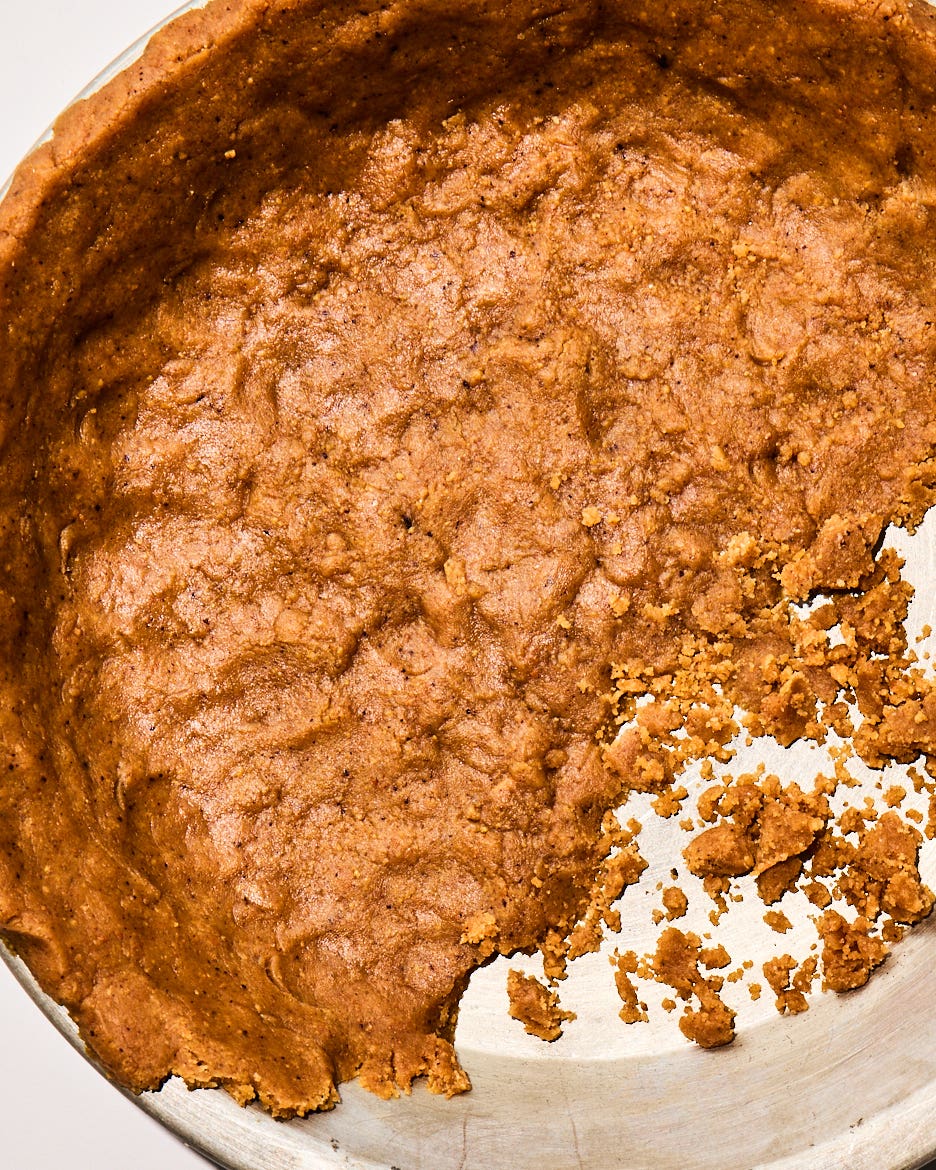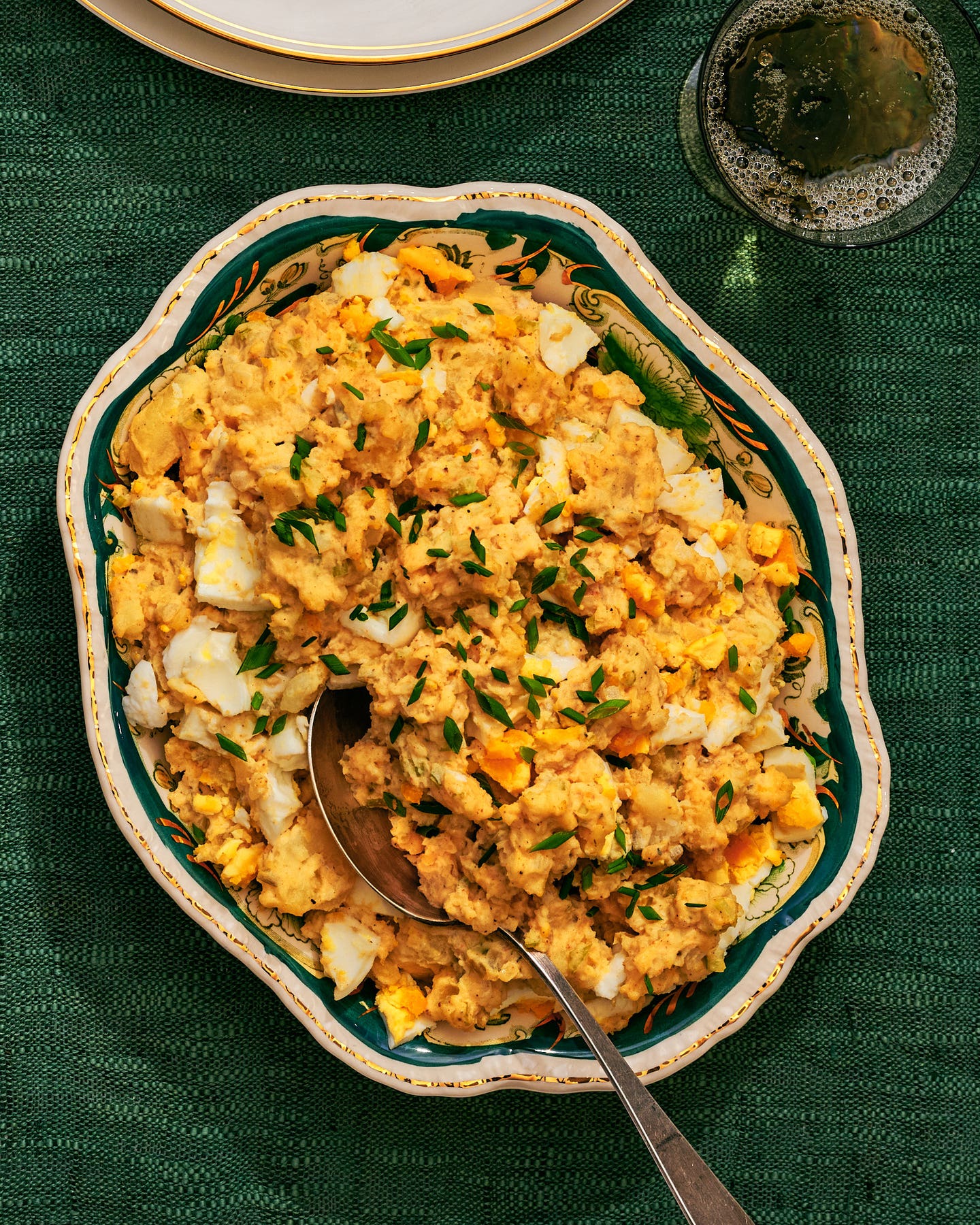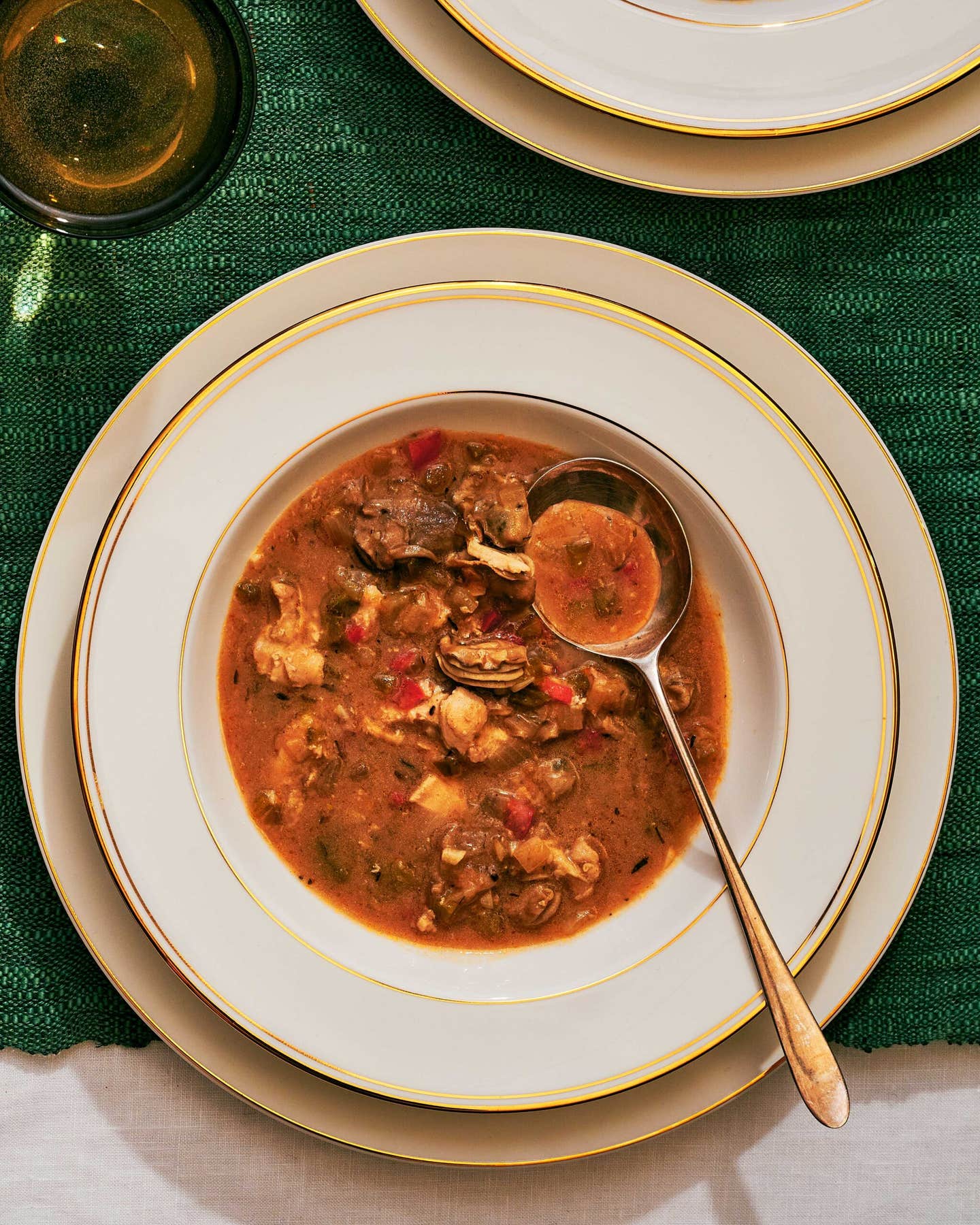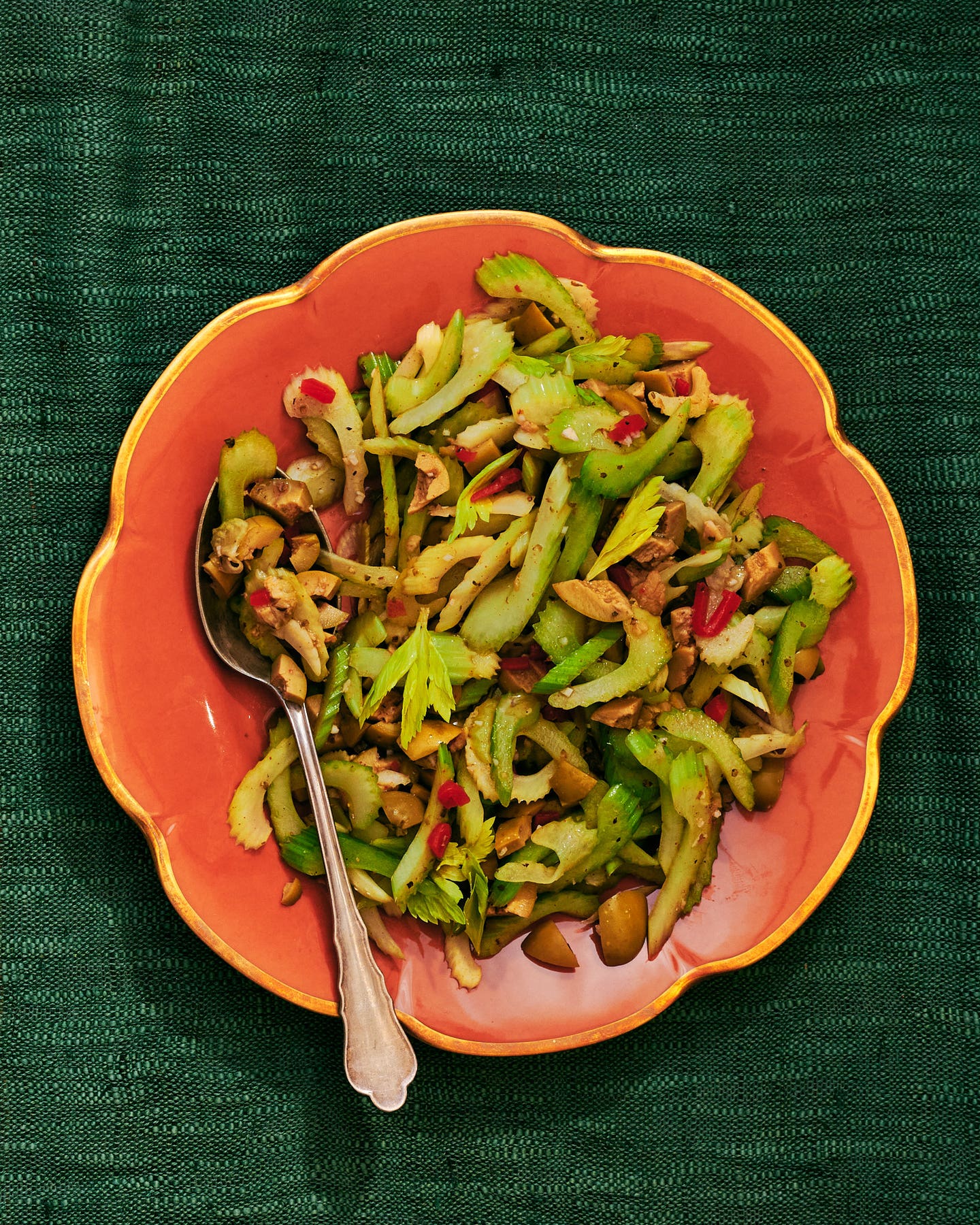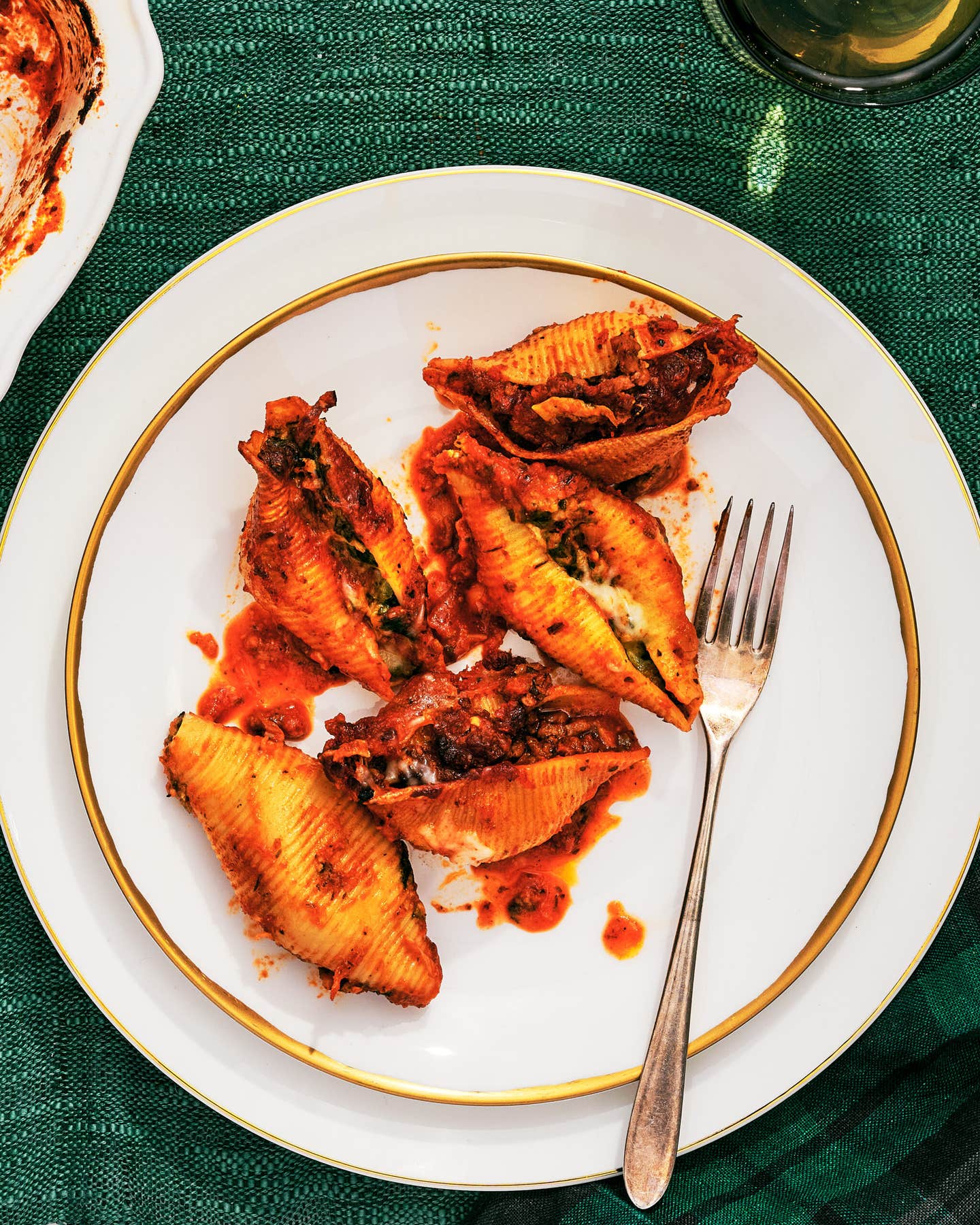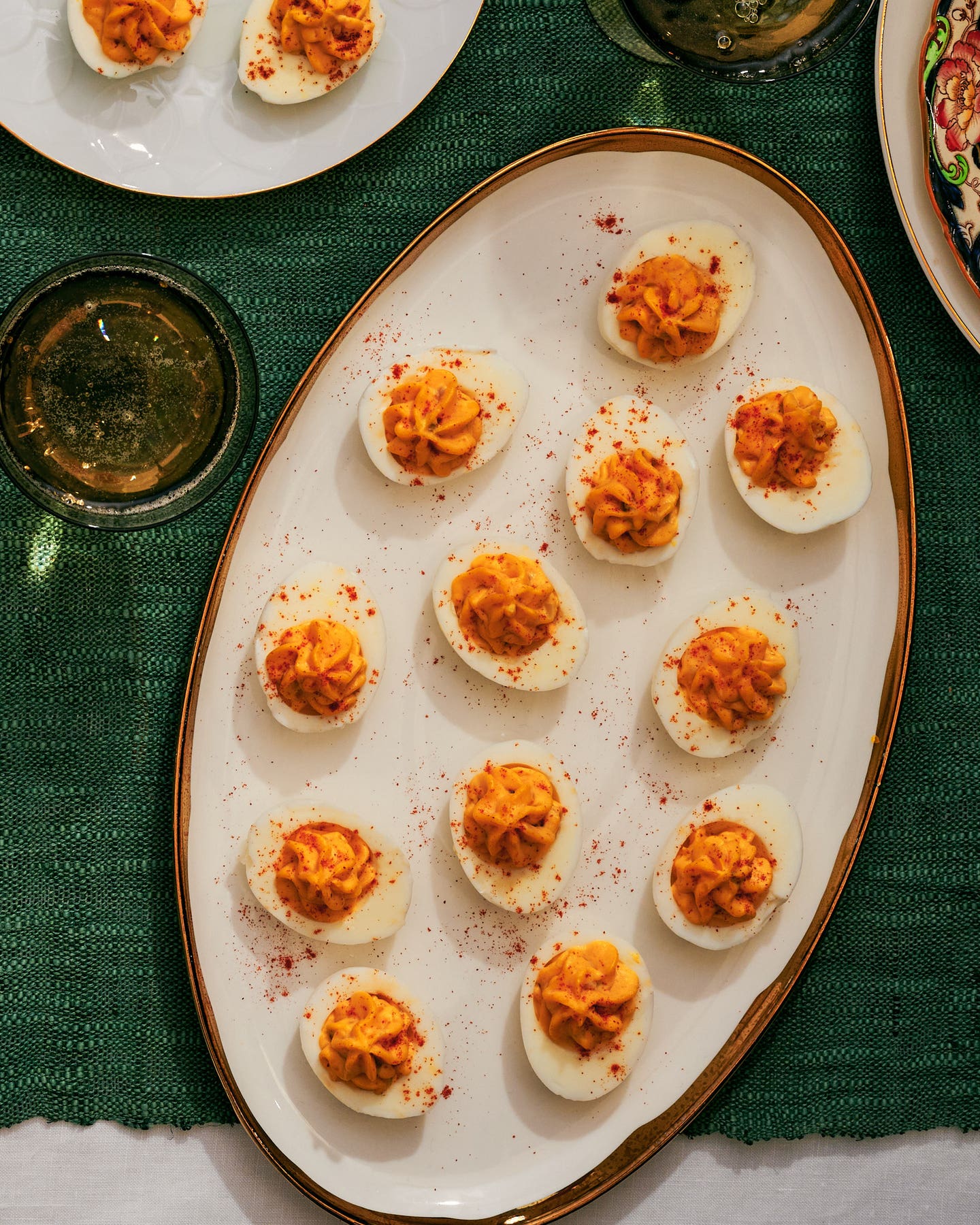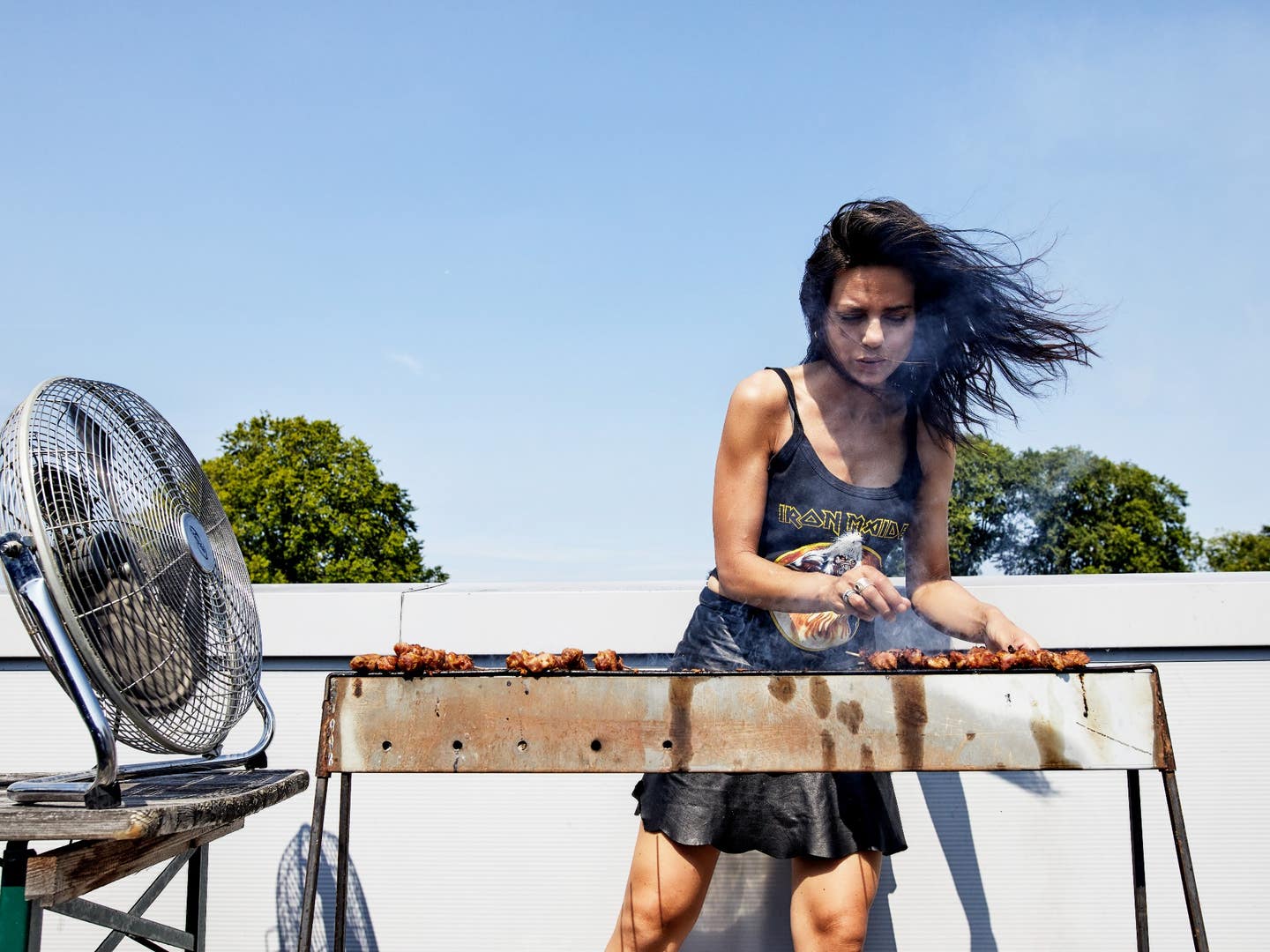
Making Indonesia-Style Satay Is All About Finding Your Grill Groove
With 250 different types across the archipelago, you have a lot of notes to choose from.
Satay is the ultimate street theatre—an edible performance, which plays out on every corner throughout the Indonesian archipelago. The smoke; the promising scent of scintillating coconut husks; the sound of fat dripping over hot coals; the dance-like moves of the satay vendor as he turns the skewers, brushing the sweet soy sauce glaze over the meat, which then caramelizes over the open flame. This hypnotizing show calls out to our primal instincts: “Eat Me!”
Who gets the credit for this wonderful dish? It can be difficult to pin down the origin of any culinary tradition. However, it’s likely that Arab traders introduced their beloved kebab to Indonesia around the 15th century; from there, versions of the dish spread throughout the rest of Southeast Asia. Indonesia, however, adopted satay as a food culture of its own.
The archipelago’s 17,508 islands comprise a tantalizing array of regional cuisines, including over 250 different types of satay, ranging from the diminutive sate lalat (“fly sate”—not made with actual flies!) to the massive, kebab-like sate buntel (minced lamb wrapped in caul fat). On the island of Java, from where my family hails, many varieties are marinated in and glazed with kecap manis, a thick soy sauce sweetened with palm sugar. Bali’s “go-to” version, sate lilit, is made from a mixture of minced seafood, and a typical Balinese spice paste which includes fresh ginger, shrimp paste, chiles, and garlic. And the western island of Sumatra is famous for its sate padang—beef cooked in a curry-like sauce, then skewered and scorched over a charcoal fire. But the most ubiquitous recipe, eaten throughout Indonesia, is sate ayam: chicken satay served with a dip of spicy peanut sauce.
Satay (spelled “sate” in Indonesian, and possibly stemming from the Tamil word for flesh, “catai”) literally translates to “roasted meat.” This definition has been expanded over the years to include not only chicken, beef, pork, goat, sheep, rabbit, and offal, but also seafood, vegetables, and plant-based proteins (think octopus, mushrooms, and tempeh). In most cases, the main ingredient is cut into bite-sized pieces, then marinated in a spice-and-herb paste called a “bumbu.” For my cookbook INDOSTOK, I stretched the concept even further, making satay out of cassava, jackfruit, eggplant, and oyster mushrooms. Whichever ingredients you decide to skewer for your own satay, here are a few tips for grilling like an Indonesian.
The Grill
A traditional satay grill is constructed of stainless steel. It has a narrow rectangular shape and looks like a huge loaf pan. In place of a grate, only one or two rods rest over the flame, ensuring the meat has little direct contact with the metal, which prevents sticking. The skewers are placed perpendicularly to the long sides of the grill, which positions the meat directly over the hot coals; the exposed tips of the skewers rest outside the grill, allowing the satay cook to turn them as needed without burning their fingers.
If you don’t have the traditional grill, however, any standard grill will get the job done—just remember to brush your satay with oil before cooking to prevent the meat from sticking to the grates, and be sure to position the exposed tips of the skewers away from the heat to prevent burning.
If you’re unable to roast over charcoal, an electric or propane grill will suffice. For indoor cooking, a liberally oiled grill pan works in a pinch. However, be aware that sugary ingredients like kecap manis will burn very easily on a griddle; if using sweet marinades, keep a close eye on your satay as it cooks, and hold off on brushing on any glaze until the meat is nearly cooked through.
Skewers and Skewering
Depending on the kind of satay you want to make, different types of skewers can be used, from single-use bamboo, to the veins of palm leaves, to lemon grass stalks, to reusable steel brochettes. In fact, in Java, even old bicycle spokes are used for skewering one particular kind of goat satay (sate klatak).
The skewering technique also depends on the kind of satay and the way the protein is cut. Fattier cuts, like chicken thigh and pork shoulder, which are juicy and flavorful by nature, take nicely to Indonesian satay, which often includes a combination of both lean meat and pieces of fat.
Chicken for satay is typically sliced into thin strips, which cook quickly, leaving the meat juicy and tender. These strips are threaded over and under a skewer, making folds in which the marinade gets stuck—protecting the bamboo from burning and creating a scrumptious effect. The best chicken satay also has pieces of skin threaded onto the skewer along with the meat, which scorches and crisps over the charcoal fire. Other proteins suited to this technique are skirt or flank steak, and squid, while tougher meats like pork or lamb neck and shoulder should instead be cut into bite-sized oblong pieces before skewering, creating slender, quick-cooking spits.
Marinade
Many satays are marinated in a bumbu before cooking. This can be a complex paste of spices and herbs or, as is often the case for chicken satay, a simple mixture of garlic, lime juice, and kecap manis. However, “the longer you marinate, the better,” is a myth—30 minutes to an hour is plenty of time. Most of the aromatics in the marinade do not permeate the meat, even after several hours. (Salt is an exception and does penetrate, binding the water in the meat and making it juicier; feel free to season with salt a bit further in advance.) Acidic ingredients like lime juice and tamarind will tenderize proteins in the short term, but they can also turn meats mushy if left to marinate for too long. In other words, in the case of satay, consider the marinade as more like a savory coating; the smaller you cut your satay ingredients, the more surface area will be coated and the more flavor you will get.
Accompaniments
The sauce served with satay also depends on the type and the region, and can range from brothy soups like soto to fragrant, curry-ish gravies. Peanut sauce (bumbu kacang), which is so often mentioned in the same breath as satay, is by far the most familiar. In fact, peanut sauce and satay are like “Tom and Jerry,” which explains why this condiment is often referred to as “satay sauce” in the Netherlands. (Ask an Indonesian vendor for satay sauce however, and he will likely frown upon your request.)
The ultimate bumbu kacang is made with freshly fried peanuts, which are then ground in a mortar and pestle with garlic, red chiles, and other flavorful goodies like terasi (Indonesian-style shrimp paste), tamarind, and kecap manis.
Sambal kecap, another popular kecap manis-based sauce, is made with raw shallots, makrut lime, and chiles.
Traditional side dishes with satay include sticky rice cakes in various forms, eaten at room temperature, and a simple vegetable pickle (acar), which provides a pleasantly acidic kick alongside the rich and smoky meats.
Shallots—either fried or pickled—are often sprinkled over satay for crunch, and as Indonesians like to “crack up” their food, some versions are also served with “krupuk.” These crispy, crunchy toppings can be made from a range of different ingredients, including tapioca flour, beef skin, and nuts.
Vanja van der Leeden is an acclaimed cookbook author, former restaurant chef and freelance journalist with an Indonesian-Dutch background. Her cookbook INDOROCK, a modern take on Indonesian cuisine, won the Gouden Kookboek prize for best Dutch-language cookbook in 2019. For this book she travelled through Indonesia to cook with all sorts of chefs and home cooks. In 2020 she published INDOSTOK, a book dedicated to satay. Her partner in cookbook crime is her husband, an award-winning Dutch food photographer.
Recipes
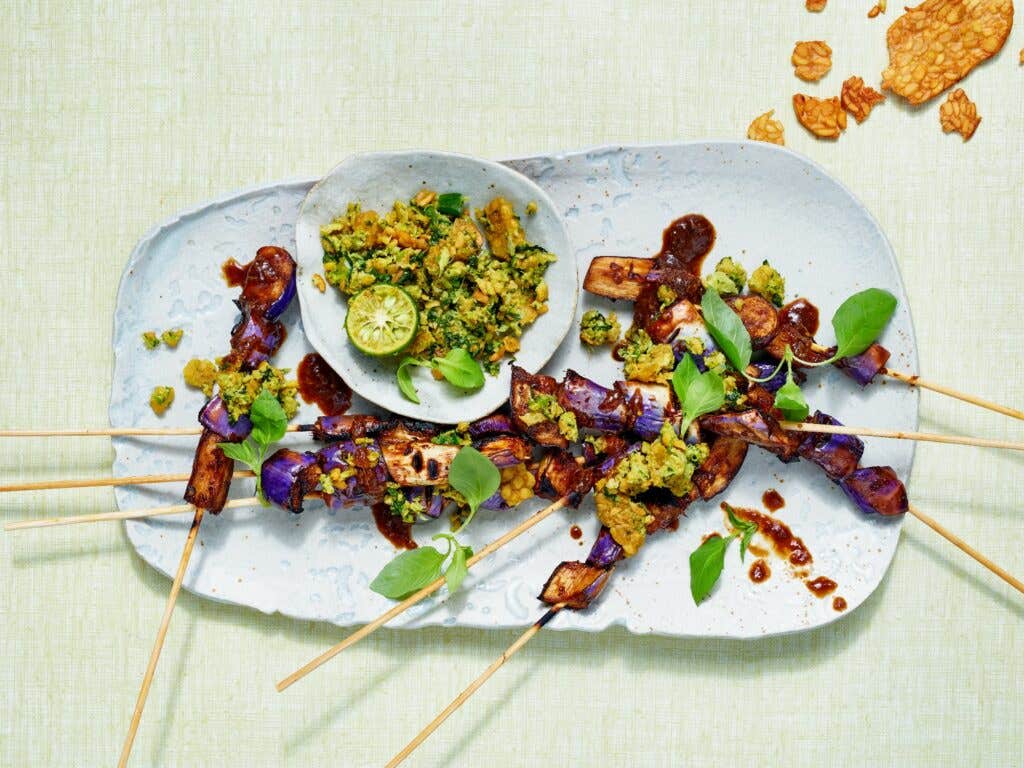
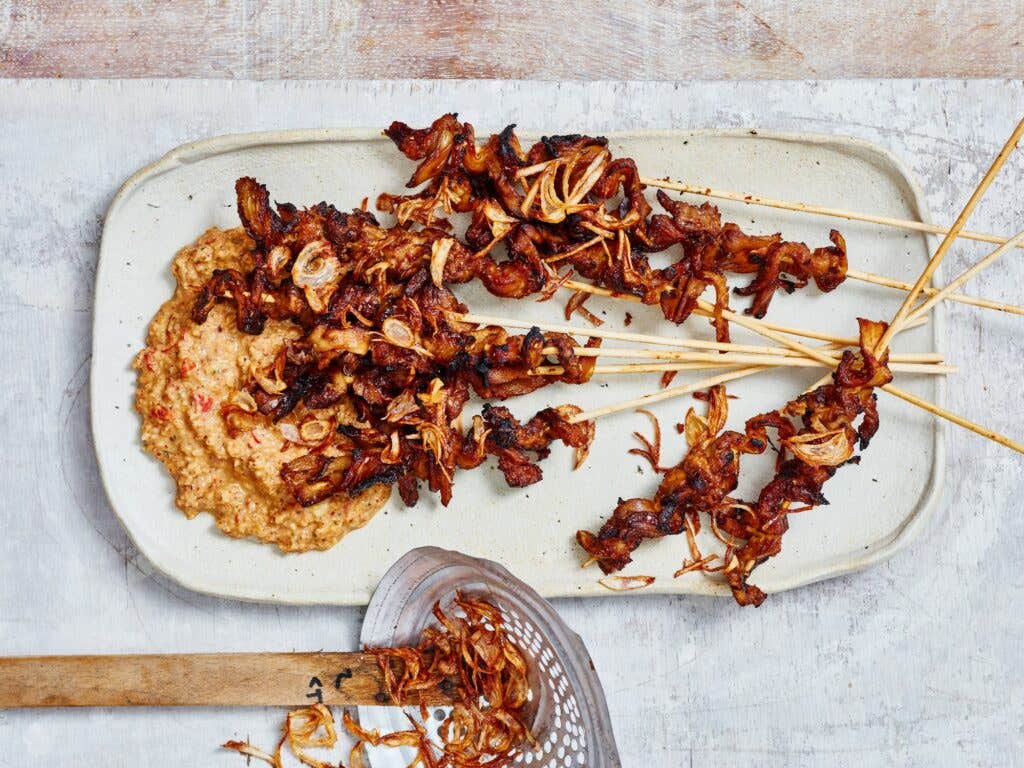
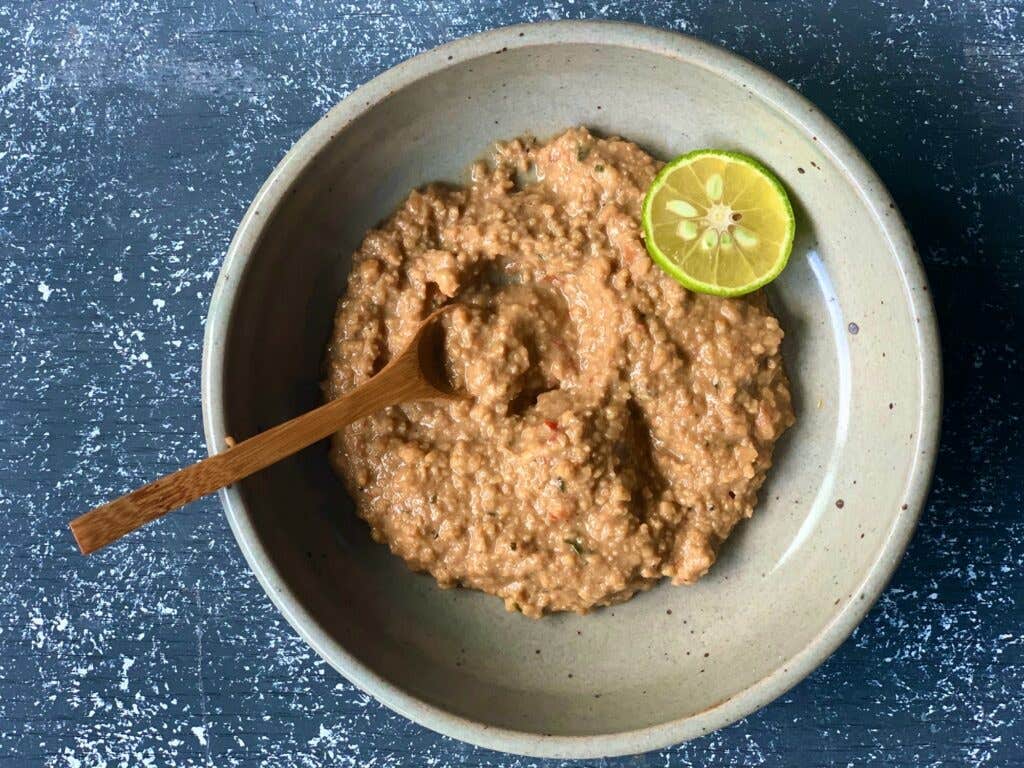
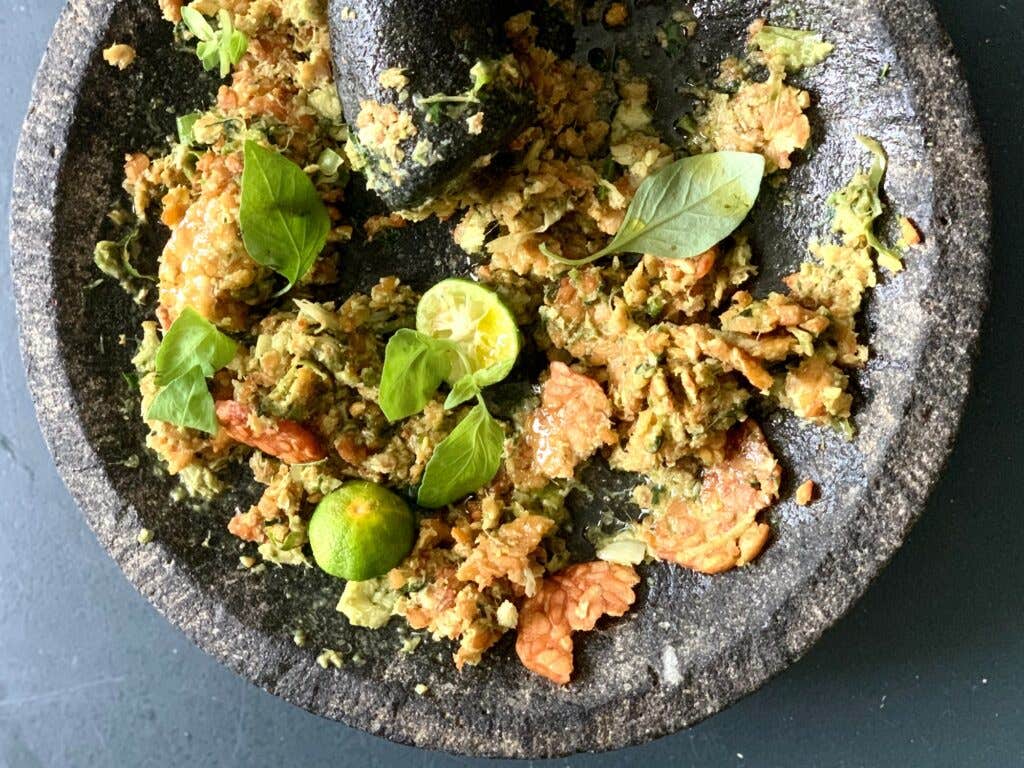
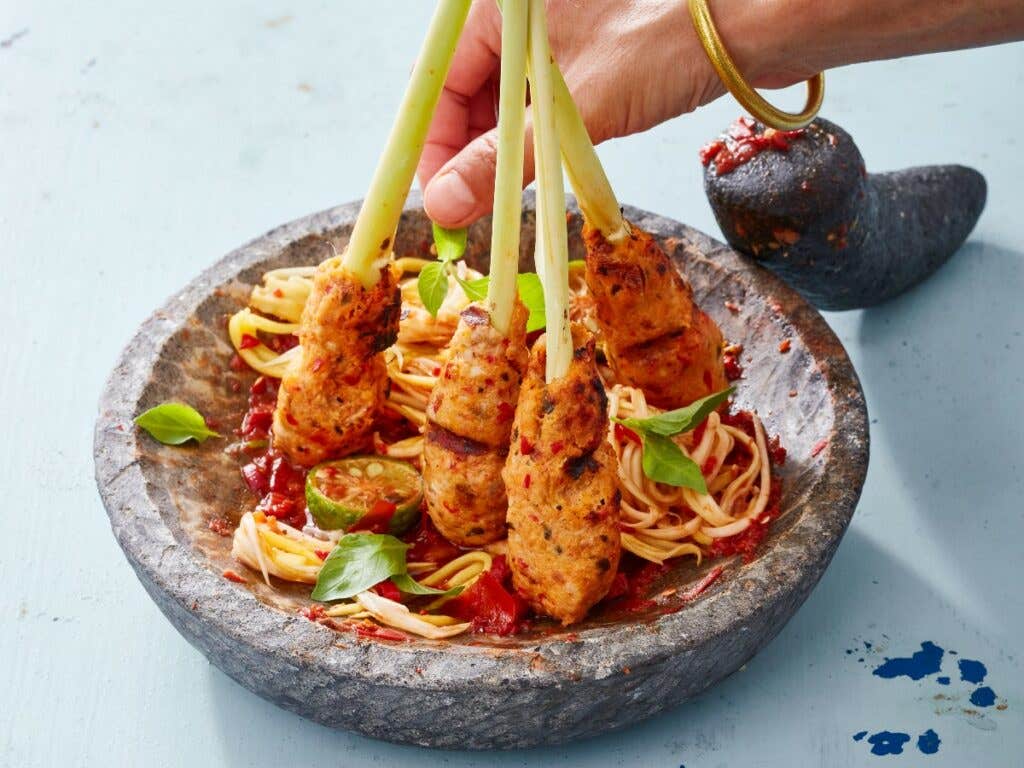
Keep Reading
Continue to Next Story


